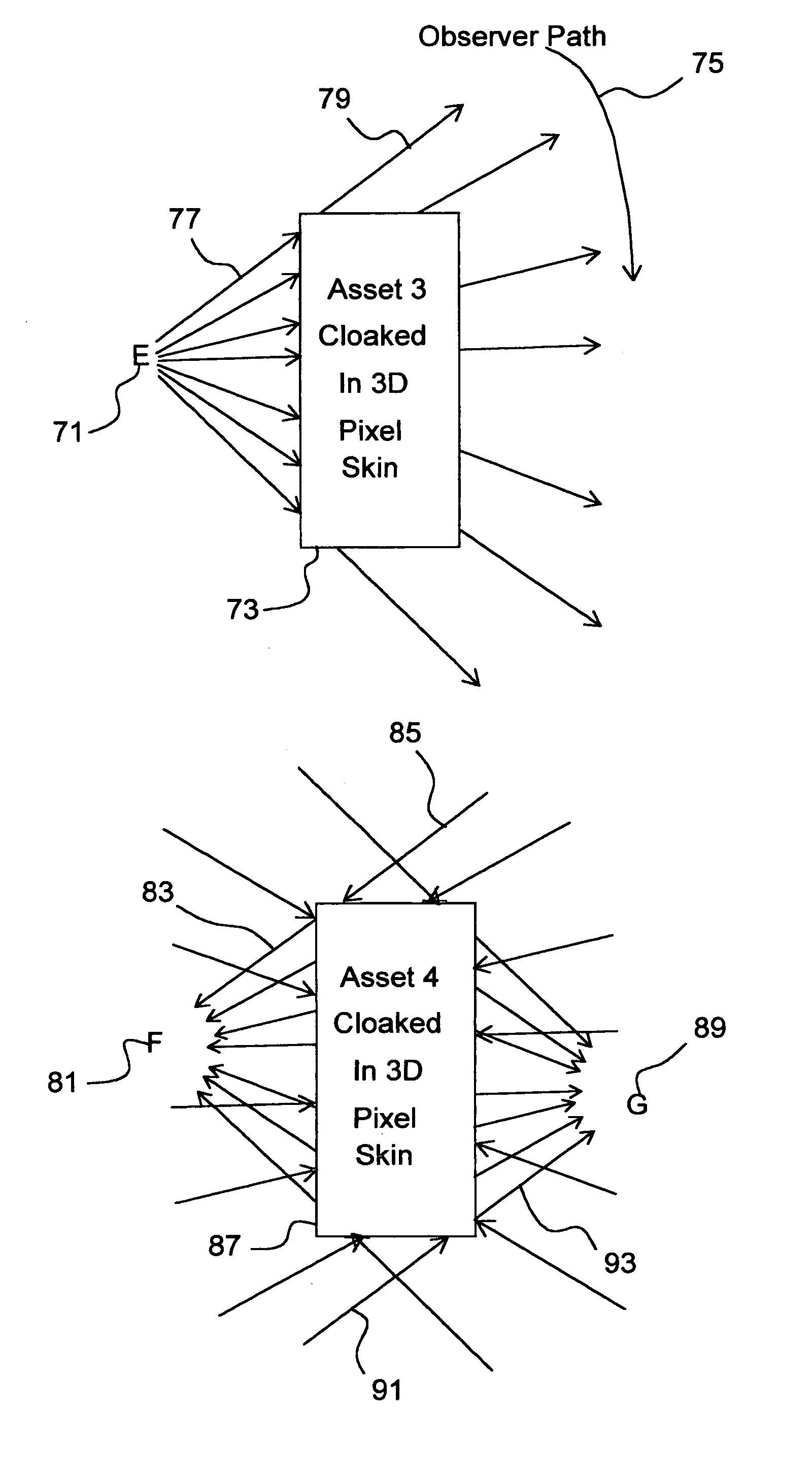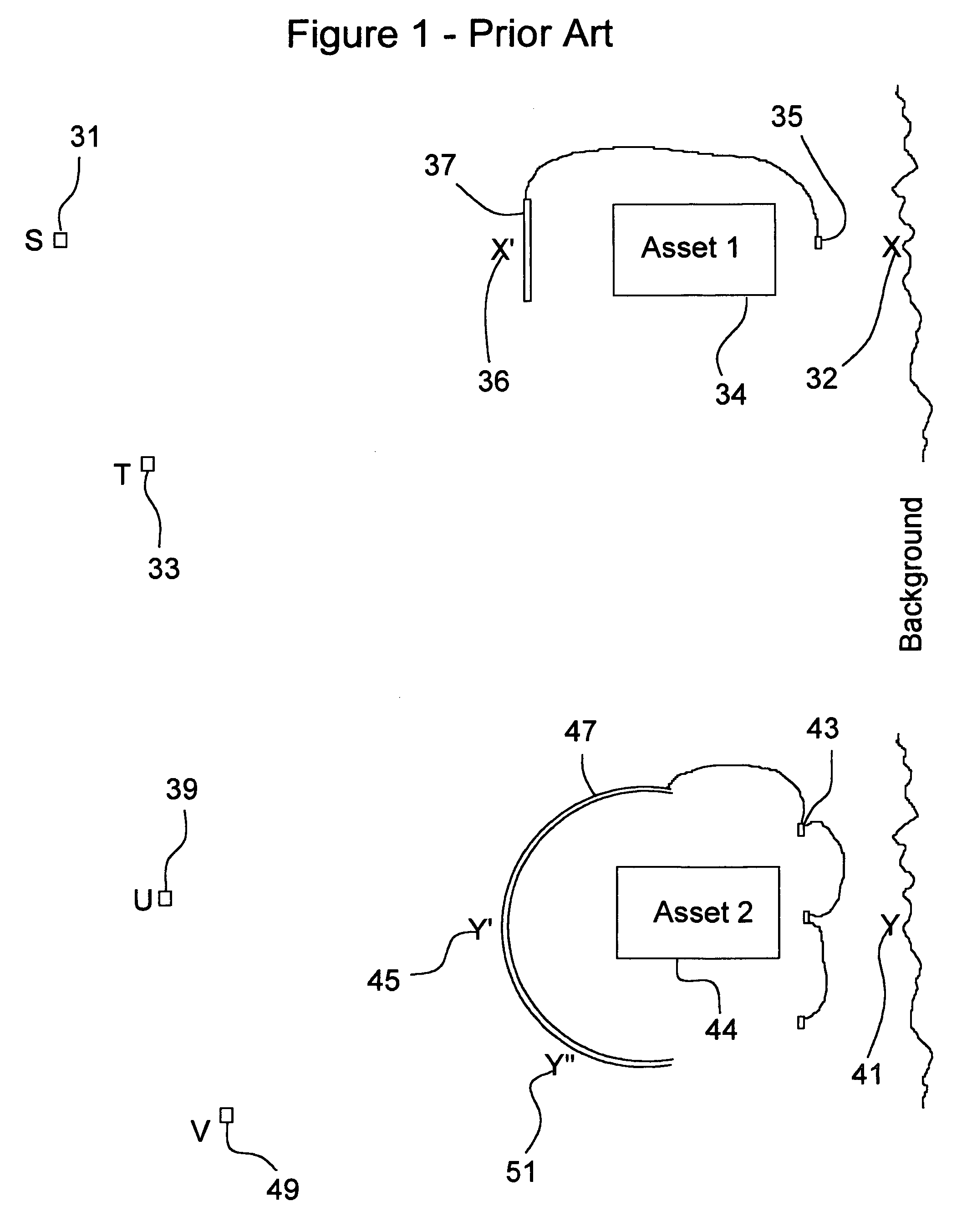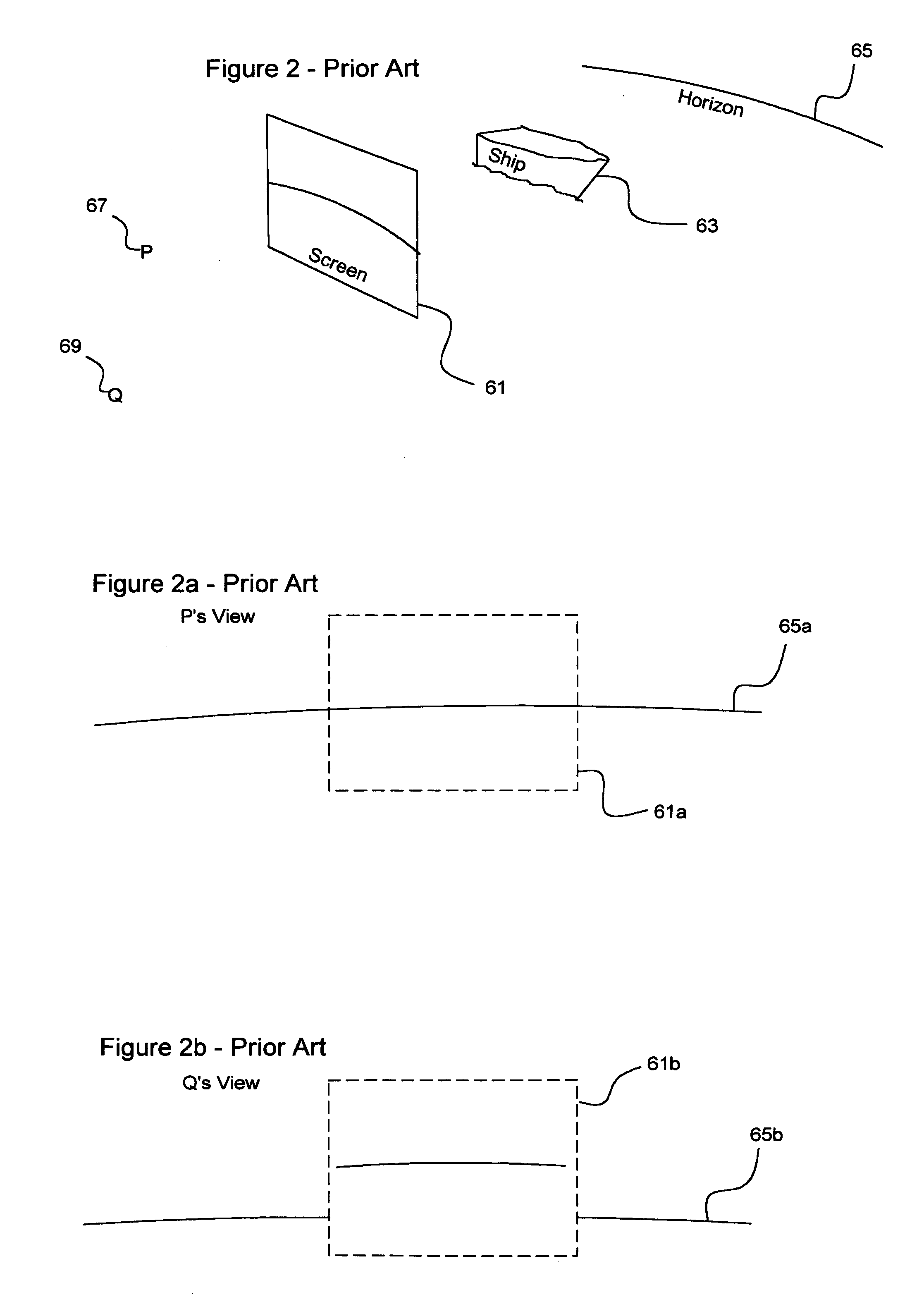Optic array for three-dimensional multi-perspective low observable signature control
- Summary
- Abstract
- Description
- Claims
- Application Information
AI Technical Summary
Benefits of technology
Problems solved by technology
Method used
Image
Examples
Embodiment Construction
[0032]FIG. 1 prior art, illustrates the shortcomings of prior art of U.S. Pat. No. 5,220,631 and of U.S. Pat. No. 5,307,162. The top half of FIG. 1 illustrates the active camouflage approach used in U.S. Pat. No. 5,220,631. This approach is also described in “JPL New Technology report NPO-20706” August 2000. Asset 134 has a screen or image sender 37 on one side of it. An image receiver 35 on the opposite side of Asset 1 captures an image of the background which is then presented on the image sender. Background point X 32 is represented on the screen as X′36. Note that for an observer at point S 31 this scheme does present a reasonable cloaking apparatus because background points line up with the observer such as X compared with X′. Unfortunately, for observation positions located anywhere other than S, the image sender presents an image that does not correspond with the background. An observer at point T 33 for example can see Asset 1 and can also see back ground point X and backgro...
PUM
 Login to View More
Login to View More Abstract
Description
Claims
Application Information
 Login to View More
Login to View More - R&D
- Intellectual Property
- Life Sciences
- Materials
- Tech Scout
- Unparalleled Data Quality
- Higher Quality Content
- 60% Fewer Hallucinations
Browse by: Latest US Patents, China's latest patents, Technical Efficacy Thesaurus, Application Domain, Technology Topic, Popular Technical Reports.
© 2025 PatSnap. All rights reserved.Legal|Privacy policy|Modern Slavery Act Transparency Statement|Sitemap|About US| Contact US: help@patsnap.com



